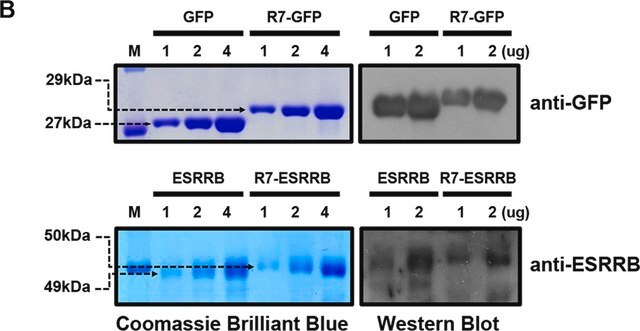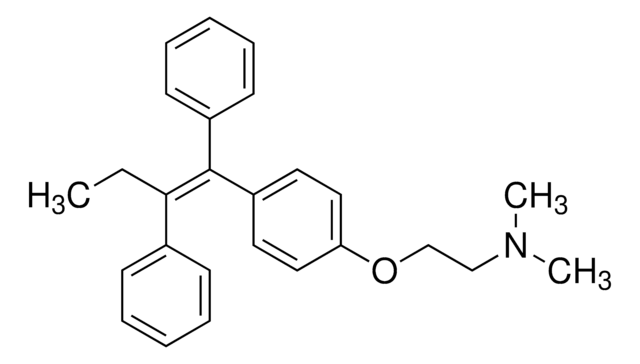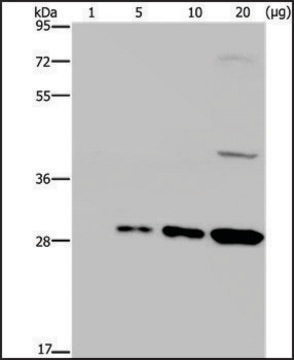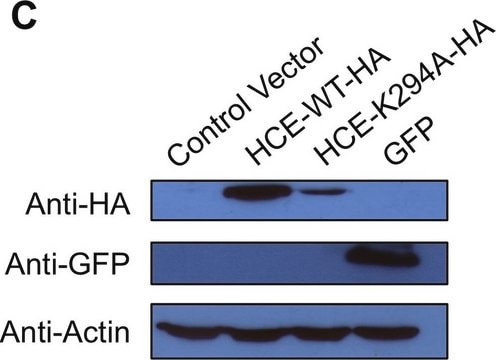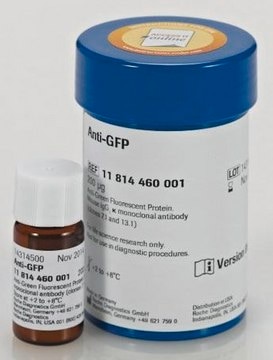MAB3580
Anti-Green Fluorescent Protein Antibody
Chemicon®, from mouse
Synonym(s):
GFP, eGFP
About This Item
Recommended Products
biological source
mouse
Quality Level
antibody form
affinity purified immunoglobulin
antibody product type
primary antibodies
clone
monoclonal
species reactivity (predicted by homology)
all
manufacturer/tradename
Chemicon®
technique(s)
ELISA: suitable
immunocytochemistry: suitable
immunohistochemistry: suitable
western blot: suitable
isotype
IgG1
UniProt accession no.
target post-translational modification
unmodified
General description
Specificity
Immunogen
Application
Immunocytochemistry: 1:500-1:1,000
Immunohistochemistry: 1:500-1:1,000 on paraformaldehyde fixed tissues with an overnight incubation using Nickel enhanced DAB for detection. Suggested permeabilization method is 0.5% Triton X-100. Recommended blocking buffer is PBS containing BSA and serum from the host of the secondary antibody. Recommended dilution buffer is PBS containing 1 mg/mL of BSA.
ELISA: 1:1,000-1:2,000 in a direct assay.
Optimal working dilutions must be determined by the end user.
Target description
Physical form
Other Notes
Legal Information
Not finding the right product?
Try our Product Selector Tool.
recommended
wgk_germany
WGK 2
flash_point_f
Not applicable
flash_point_c
Not applicable
Certificates of Analysis (COA)
Search for Certificates of Analysis (COA) by entering the products Lot/Batch Number. Lot and Batch Numbers can be found on a product’s label following the words ‘Lot’ or ‘Batch’.
Already Own This Product?
Find documentation for the products that you have recently purchased in the Document Library.
Customers Also Viewed
Our team of scientists has experience in all areas of research including Life Science, Material Science, Chemical Synthesis, Chromatography, Analytical and many others.
Contact Technical Service